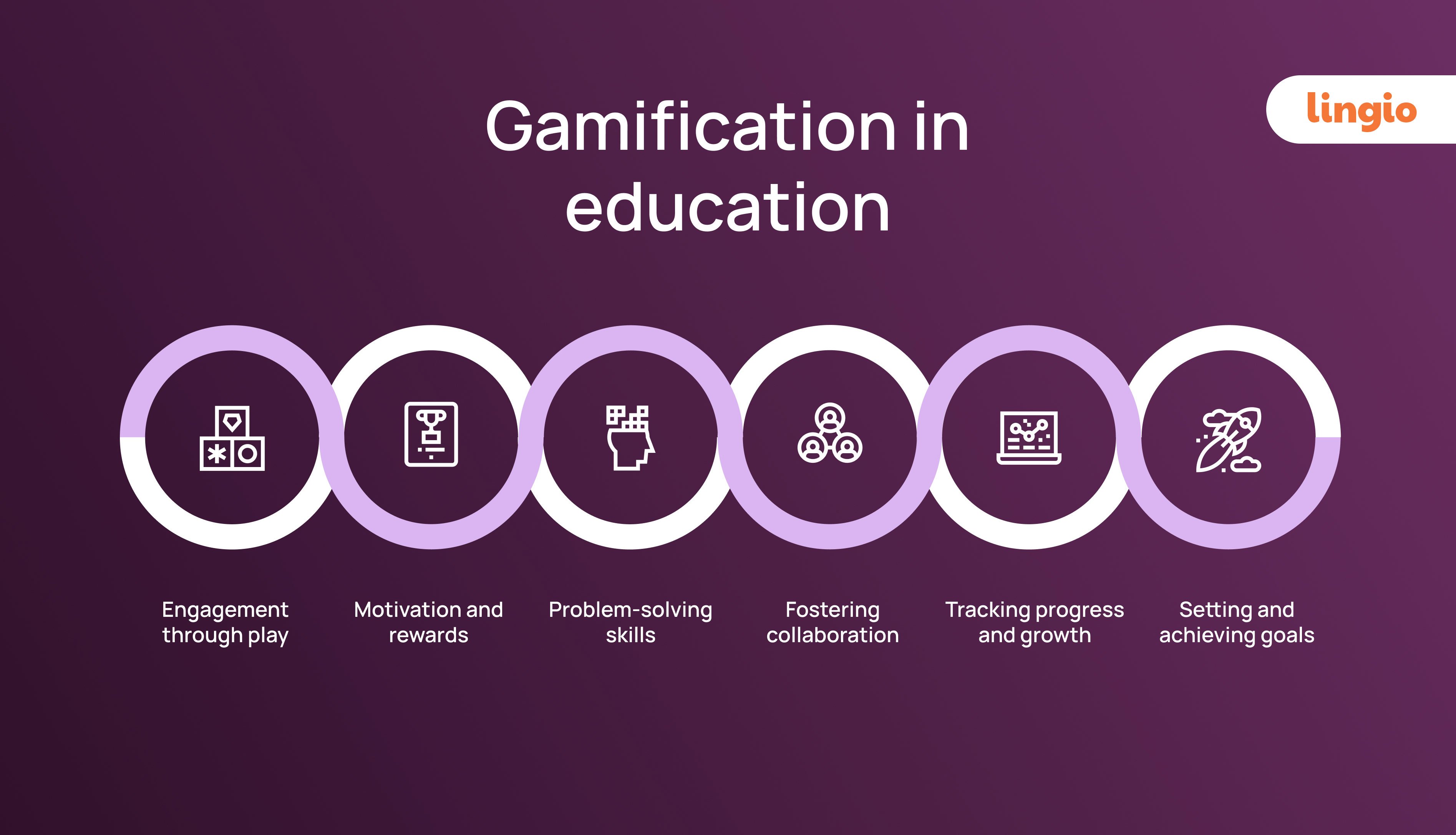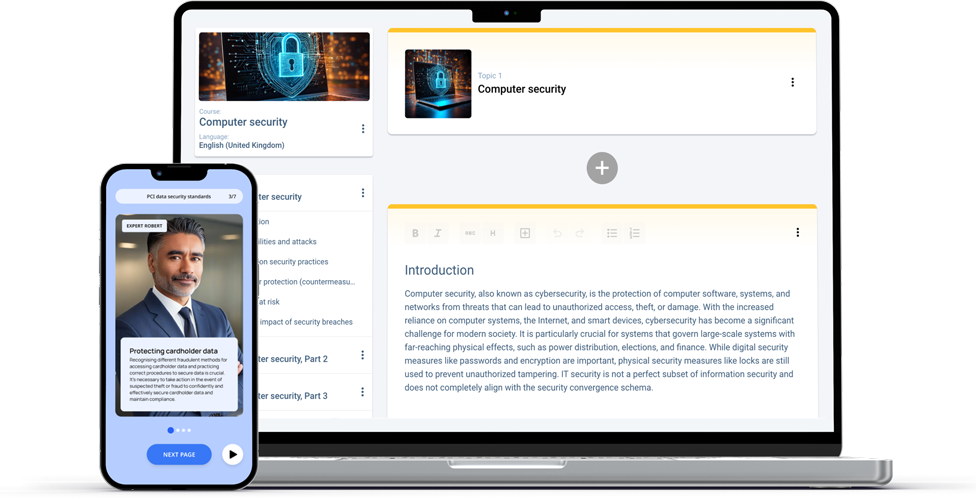Advantages and disadvantages of gamification in education
You may be wondering, ‘why use gamification in education?'. We're here to share. Let's cover some of the advantages and disadvantages of gamification in education.

Advantages of gamification in education
Here are five benefits of gamification in education.
1. Increased engagement and motivation
Integrating elements of gamification in education taps into the intrinsic motivations and competitive instincts of students, making the educational journey both enjoyable and compelling. A 2012 study proved that intrinsic motives affect staff engagement three times more than extrinsic motives, which use rewards or incentives as motivation. For example, praise, fame, or money.
The interactive nature of gamified learning, enriched with role-play and competitive challenges, transforms the learning process into an immersive adventure. This captivates learners and enhances knowledge retention through the emotional and psychological highs associated with achieving goals and overcoming challenges. This heightened engagement ensures that learning leaves a lasting impact on students' enthusiasm and eagerness to learn.
2. Enhanced learning experience
Gamification in education transforms online learning into an engaging and effective arena where students thrive. Introducing video game design elements into the educational process cultivates an informal, exciting, impactful learning environment. This excitement boosts engagement and also significantly enhances information retention. When learners are genuinely enthusiastic about their educational journey, they're more likely to absorb and remember the content, leading to a richer and more fruitful learning experience. This approach makes learning more enjoyable and deeply enriches students' understanding and skill of the subject matter.
3. Customised learning paths
By allowing learners to progress at their own pace and choose their challenges, gamification ensures a more personalised educational experience. Personalised learning is important - one study of 11,000 students at 62 schools ound that the longer students experienced ‘personalised-learning practices,' the more significant their achievement growth.
This individualised approach is one of the primary gamification benefits in education. It provides diverse learning styles and maximises engagement and efficacy, making education more inclusive and adaptive for everyone involved. Through this tailored learning environment, students can explore their strengths and interests in depth, leading to a more fulfilling and motivating learning experience.
4. Immediate feedback and recognition
Gamification in education revolutionises the feedback and recognition process, providing immediate insights into learners' progress and achievements.
Educational research shows that postponing feedback hinders reinforcement learning by diminishing the positive response to rewards in comparison to situations where feedback is immediate.
This real-time feedback mechanism mirrors the dynamic nature of games, where players continuously assess their performance and adjust strategies accordingly. In an educational setting, learners can instantly see the results of their efforts, understand where improvements are needed, and celebrate their successes. Such immediate recognition can motivate learners to strive for continuous improvement and support a deeper understanding of the material. By integrating these game-like feedback loops, training becomes a more responsive and rewarding experience.
5. Allows learners to see real-world applications
Gamification in education bridges the gap between theoretical knowledge and real-world application, offering learners a hands-on approach to understanding and applying their skills. By simulating real-life scenarios within gamified educational contexts, learners can directly see the impact of their decisions, experiencing firsthand the consequences and rewards of their actions. This immersive learning experience solidifies their grasp of the subject matter and highlights its practical relevance and utility. This approach empowers students to appreciate the real-world significance of their learning and prepares them for future challenges and opportunities.
Disadvantages of gamification in education
Next, let’s discuss five challenges of gamification in education.
1. Potential for overemphasis on competition
While gamification in education provides the power of competition, there's a risk it might overshadow cooperation. An overemphasis on competition can create pressure, leading to stress and anxiety among learners who might feel left behind. It's crucial to balance competitive gamification elements with collaborative and supportive learning experiences to ensure everyone benefits equally, promoting an environment where learning triumphs over winning. This approach encourages a healthy competitive spirit without compromising the essence of learning and personal growth.
2. Risk of diminishing intrinsic motivation
Introducing gamification in education can inadvertently diminish intrinsic motivation by emphasising external rewards like badges and points too much. When the thrill of the game dynamics overshadows the love for learning, students may focus solely on earning rewards rather than valuing the knowledge itself. It's essential to design gamified learning experiences that enhance, rather than replace, the intrinsic joy of learning, ensuring that the pursuit of rewards complements rather than detracts from the genuine curiosity and desire to learn.
3. Challenges in proper implementation
Implementing gamification in education presents challenges, requiring careful planning, resources, and training. Educators must navigate the complexities of integrating game elements into training effectively without compromising educational content. This balancing act demands a deep understanding of pedagogy and gamification design, as well as ongoing support to ensure that gamification strategies are engaging and educationally sound. Without proper implementation, the potential benefits of a gamified system risk being undercut.
4. Accessibility and equality concerns
Not all students have equal access to the educational technology required for gamified learning, potentially widening the gap between those with and without digital resources. Ensuring fair access is crucial for harnessing gamification's full potential, requiring strategies that accommodate diverse learning environments and educational technological capabilities.
5. Oversimplification of complex subjects
The risk of oversimplification of complex subjects is one of the main disadvantages of gamification in education. By focusing on game elements, there's a risk that the depth of academic content may be reduced to fit within the confines of gamified activities. This simplification can lead to a superficial student understanding of topics, where students might miss out on critical analytical and reflective learning opportunities. Educators need to strike a balance, ensuring that while gamification makes learning engaging, it doesn't compromise the integrity and complexity of educational material. Crafting gamified experiences that enrich rather than dilute subject matter is vital to leveraging the educational benefits of gamification while preserving depth.







